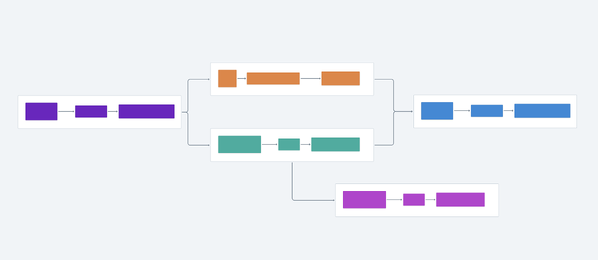Anyone can jump into a CRM and begin using it immediately. But as with many things in life, what separates the amateurs from the experts is the application of foresight and organization to support the work done.
As the backbone of smart data-driven decision making, your contact database is one of the most important parts in your marketing kit. And ensuring your segmentation is tight will allow you to leverage it for the best results, and most importantly, will help you and your team avoid making mistakes.
The good, the bad and the unorganiZed
Not having an organized list segmentation system can result in contacts being opted into communications incorrectly, leads and customers mixed up, inaccurate reporting and messy employee handovers. All potentially resulting in the wrong content being sent to the wrong person, at the wrong time.
Need help building your buyer personas? Use this easy template
Alternatively, investing in an intentional and organized segmentation plan will ultimately help you to make smarter decisions, based on accurate data, meaning you get the best results possible. And that’s not just increased engagement and sales. You’ll also save time and energy down the line as content is efficiently leveraged, your analytics are consistently accurate (so no backtracking on data), and new employees hit the ground running. And of course, no incorrectly targeted emails or paid ads.
Level up your segmentation strategy
There’s plenty of information out there about why you should segment your database. So here are four tips on how to get organized and make the most of them within your wider strategy.
Tip One: Document it outside of your CRM
First and foremost, you’ll need a system outside of your CRM to outline what’s going on inside it. For example, this could be a spreadsheet that includes all segment lists, descriptions and sources, and how they factor into your wider strategy. Then you can link to the lists for easy access. We also recommend creating an accompanying flowchart that shows how the lists are filtered and inter-relate to each other.
Make these functional documents in a way that works for you and your team. But having an overall view of what’s going in and out of your CRM portal is key for keeping tabs on your segments and improving how you use them.

Tip Two: Use naming conventions & folders within your CRM
Within the document, develop and use understandable naming conventions for your segment lists. Then ensure these naming conventions are consistently used across folders within your CRM, too. You could also extend their use across campaign content if it makes sense.
This will help you to find lists quickly for sending and reporting, and ensures the correct campaigns are using them.
For example: Type of Contacts_Purpose_Use_Date Live (e.g. Customers_1 week since purchase_onboarding workflow_051820
Tip Three: Track your imports and data sources
If you don’t know where the data within a segmented list has come from, then you don’t really know your list. Most CRMs are built to present data in real-time, so trying to dig back through where it's all coming from is time-consuming and tricky.
So be sure to capture all of the data ‘on-ramps’ within the CRMs flow of information. Depending on the complexity of your CRM integrations, this could include data coming from lead captures and eCommerce transactions, as well as manual imports.
Tip Four: Look for data you may not know you have
Take a look at the data your CRM is automatically capturing about your contacts, such as country, associated company or annual revenue. Along with a better understanding of your contacts, these could also inspire you to create a useful segment and targeting strategy you hadn’t thought of before.

Tip Five: Build it into your lifecycle stages, lead scoring & overall content strategies
Even in the most organized companies, segmentation strategies are often forgotten about while wider strategies are being developed.
But incorporating your segmentation strategy into your marketing efforts will enable you to better identify the key triggers that determine how a contact moves through your funnels. And because your lists will be so organized, you’ll also easily be able to measure a funnel’s true efficacy and identify the parts that aren’t working so well.
Could do with some help?
Everyone needs a helping hand once in a while. If you’re not quite sure where to start or where to go next with your segmentation strategy, Horseshoe + Co can help guide you on your road to success.
Contact us here.




